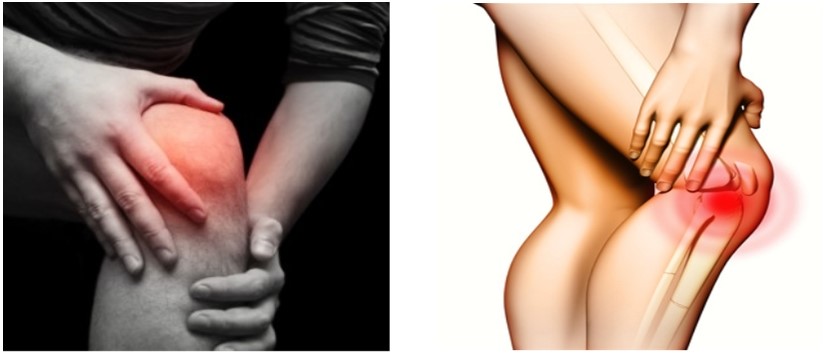
Source: www.blog.credihealth.com
What Is Chondromalacia Knee?
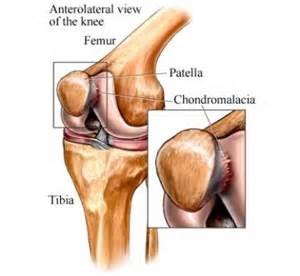
Source:www.theknee.com
The cartilage under your kneecap/patella is a natural shock absorber. It provides a smooth glistening surface that allows joints to move smoothly. Overuse, injury or other factors may damage or wear away the cartilage and lead to a condition known as Chondromalacia knee/ patella. This condition also commonly known as patellofemoral pain syndrome.
What Causes Chondromalacia Knee?
- Overuse of the knee, eg certain sports that involves running and jumping.
- Mal-alignment of the kneecap. (eg. Weak medial quadriceps muscles (vastus medialis oblique/VMO), causes patella to be laterally aligned in the femoral groove, thus patella may not glide smoothly and may rub on one side and cause pain).
- Tight lateral knee structures such as the ITB (Ilio-tibial band).
- Over pronating feet.
- Weakness of the hip muscles (hip abductor and external rotator).
- Arthritis of the knee joint (older adults).
- Increased in ‘Q’ angle (the patella tends to shift outward with greater pressure).
What Are The Symptoms of Chondromalacia Knee ?
- Pain around the knee. The pain is usually located at the front of the knee, around or behind the kneecap (patella).
- Popping or clicking (crepitus) feeling as you bend your knee.
- You may hear a grinding or crunching sound in the knee when you squat or go up and down stairs.
- Pain when sitting for long period of time (with the knee bent).
- The pain is typically worsened when going up or down stairs, squatting and kneeling.
- The knee may swell with heavy use and become stiff and tight.
- Swelling (effusion) of the knee joint is rare, but may occur sometimes when the knee becomes irritated.
How It Is Diagnosed ?
Your physiotherapist will check if pain can be reproduced by providing resistance while you straighten your knee. This test reproduces the pain associated with chondromalacia patella because it puts pressure on the painful cartilage on the back of the patella and thus helps to confirm the diagnosis.
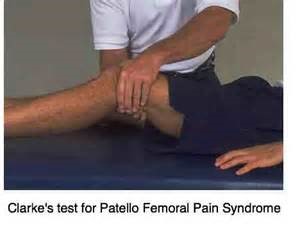
Source: www.chiropractic-help.com
Risk factors for Developing Chondromalacia Knee Include:
- Typically affects adolescents and young adults.
- Women are more affected than men. This may be because a woman’s wider pelvis increases the angle at which the bones in the knee joint meet, (‘Q’ angle).
- Trauma to the kneecap, such as a dislocation or fracture.
- Being knock-kneed or flat-footed.
- Certain sports which involve running or jumping can predispose to chondromalacia knee.
Complication
Untreated Chondromalacia Knee can lead to difficulty with routine activities, such as squatting and climbing stairs.
Physiotherapy Treatment
The physiotherapy will assess and evaluate your knee, help you to rehabilitate the affected knee by improving the strength of the muscles around the knee, this will eases the stress on the knee. There are specific exercises that can help to correct alignment and muscle imbalance around the knees.
Treatment may comprise of :
- Ice treatment
- Electrotherapy (eg. Ultra sound, Transcutaneous electrical nerve stimulation/ TENS).
- Specific Strengthening exercise that support your knees and control limb alignment, such as your quadriceps, hamstrings and the muscles around your hips (especially the hip abductors).
- Stretching exercise to reduce tight structure (especially ITB and hamstring).
- Joint mobilisation (gentle gliding) techniques, (attaining a normal range of pain-free joint motion and reduce joint stiffness).
- Supportive taping and Strapping to stabilise or support the knee, relief pain and facilitate normal movement.
- Education; avoid any exercise that aggravates your knee pain, including running or jumping, try doing a low-impact form of exercise instead such as swimming which places less stress on your knees.
Surgical Intervention
- Arthroscopy
Surgical instruments are passed through the arthroscope to remove fragments of damaged cartilage.
Exercises for Chondromalacia Knee
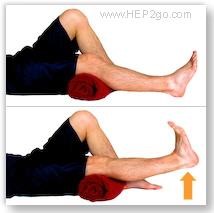 |
 |
Quadriceps Contraction Exercises
Source:www.hep2go.com
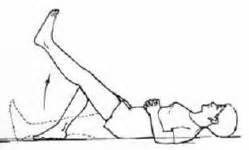 |
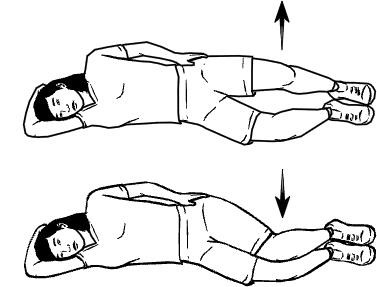 |
| Straight leg Raising Source:www.braceability.com |
Abductor Strenthening Source:www.braceability.com |
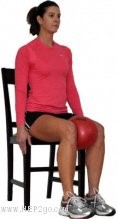 |
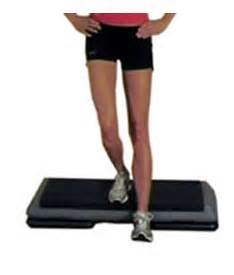 |
|
Inner range Quadriceps Strenghtening |
Adductor Strengthening Source: www.hep2go.com |
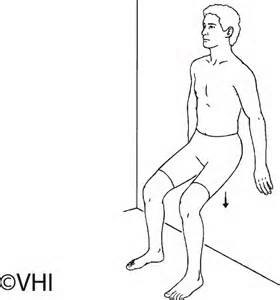 |
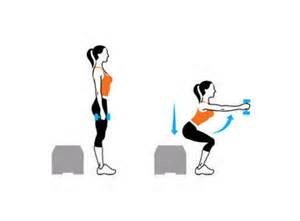 |
|
Wall squats for Knee strengthening Source: https://au.lifestyle.yahoo.com |
Box squats for Knee strengthening Source: www.pixgood.com |
 |
 |
| ITB Stretch 2 Source:www.hep2go.com |
ITB Stretch 1 Source:www.hep2go.com |
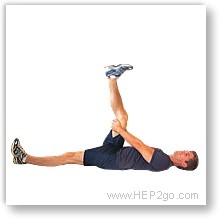 |
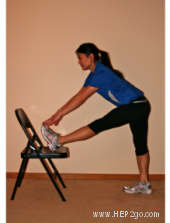 |
| Hamstring Stretch 2 Source: www.hep2go.com |
Hamstring Stretch 1 Source: www.hep2go.com |
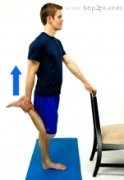 |
 |
| Quadriceps Stretch 2 Source: www.hep2go.com |
Quadriceps Stretch 1 Source: www.hep2go.com |
 |
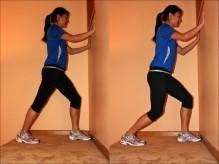 |
| Calf muscles stretch Source: www.hep2go.com |
Gastrocnemius / Soleus stretch Source: www.hep2go.com |
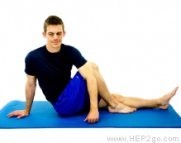 |
 |
|
Buttock stretch 2 Source: www.hep2go.com |
Buttock stretch 1 Source: www.hep2go.com |
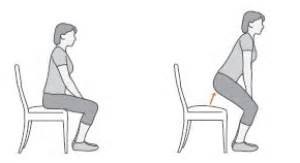 |
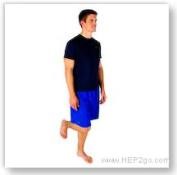 |
| Balance retraining (quadriceps and glutes) : Sit to stand Source: www.hep2go.com |
Balance and knee strengthening Source: www.buildhealthybody.com |
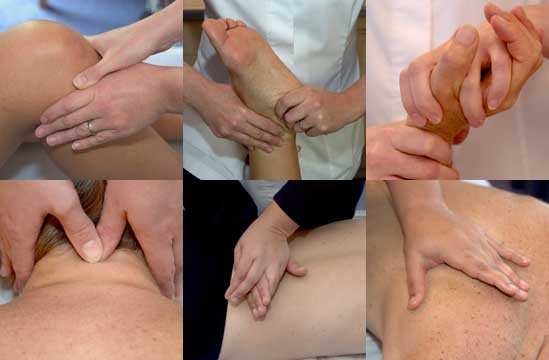 |
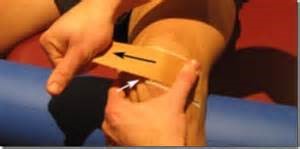 |
| Example : Joint mobilisation techniques Source: http://www.physioworks.com |
Example : Taping Technique Source: www.joelvanderlugt.wordpress.com |
Conclusion
Try exercises being proposed here to help alleviate pain and prevent future injury, early intervention is essential to speed up recovery.
References
- Crossley, K.M et al 2004. Knee flexion during stair ambulation is altered in individuals with pattelofemoral pain. J Orthop Res, 22(2):267-74
- Crossley, K.M et al. 2001. A systematic review of physical interventions for patellofemoral pain syndrome. Clin J Sport Med, 11(2): 103-10
- Clark, D.I et al. 2000. Physiotherapy for anterior knee pain: a randomized controlled trial, Ann Rheum Dis , 59:700-704.
- Dixit, S et al. 2007. Management of patellofemoral pain syndrome. Am Fam Phyician. Jan 15:75(2): 194-202
- Hauser, R.A. 2014. Outcomes of prolotherapy in chondromalacia patella patients. Improvements in pain level and function. Clin Med Insights Arthritis. Musculoskelet Disord, 7:13-20
- Harris, J.D et al. 2010. Treatment of Chondral defects in the athlete knee. Arthroscopy, Jun 26(6):841-52
- Mc Connell, J. 2007. Rehabilitation and non-operative treatment of patellar instability, Sport Med Arthrosc, 15(2):95-104
- Retrieved 28 June 2015 http://iphysioperth.com.au/news/physiotherapy-for-chondromalacia.
Source Image
- Retrieved 28 June 2015 http://www.blog.credihealth.com
- Retrieved 28 June 2015 http://www.theknee.com
- Retrieved 28 June 2015 http://www.physioworks.com
- Retrieved 28 June 2015 http://www.joelvanderlugt.wordpress.com
- Retrieved 28 June 2015 http://www.health-writing.com
- Retrieved 28 June 2015 http://www.chiropractic-help.com
- Retrieved 28 June 2015 http://www.braceability.com
- Retrieved 28 June 2015 http://www.sportsinjuryclinic.net
- Retrieved 28 June 2015 http://au.lifestyle.yahoo.
- Retrieved 28 June 2015 http://www.hep2go.com
- Retrieved 28 June 2015 http://www.buildhealthybody.com
- Retrieved 28 June 2015 http://www.pixgood.com
| Last Reviewed | : | 23 August 2019 |
| Writer / Translator | : | Se To Phui Lin |
| Accreditor | : | Daaljit Singh Harbachan Singh |
| Reviewer | : | Halimah bt. Hashim |







